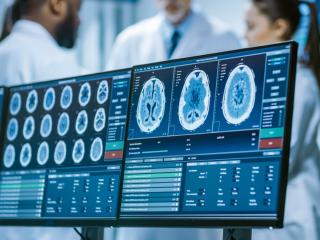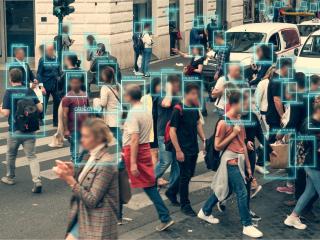AI for diagnostic imaging, active perception and data during crises
On Thursday, June 17, 2021, the fifth edition of the TAISIG Talks took place. TAISIG is the Tilburg University Artificial Intelligence Special Interest Group: a research community committed to Artificial Intelligence (AI). Sharon Ong, Yash Satsangi and Kenny Meesters shared their insights.
Improving patient care with AI for diagnostic imaging
Dr. Sharon Ong is assistant professor at the department of Cognitive Science and Artificial Intelligence. In her talk she argues for the need and usefulness of AI in clinical decision making. Hospitals gather much data by issuing medical tests and examinations such as X-rays and CT Scans. Manually checking and analyzing this data is time consuming. AI can reduce the time used to analyze data and improve the quality of the decision made by medical experts. Sharon gives three examples of successful use of AI in diagnostic imaging. The first project is on fracture detection in scaphoids using X-ray images. The second project is on prediction of cognitive outcomes for a patient, using the MRI and clinical variables. The final project is on the detection of osteolytic bone lesions in patients with multiple myeloma by using CT scans.
Challenges of active perception
Yash Satsangi discusses the challenges posed by active perception and how planning and learning algorithms can help tackle these challenges. Sensor selection is an active perception task. This takes place for example when an algorithm of a multi-camera surveillance system needs to decide on the allocation of scarce resources such as computational power. To fulfil this task the agent needs the ability to model the partial observability, reason about the consequences of a decision, associate objective value to its estimate of uncertainty, be able to deal with a combinatorial action space and learn from its past actions. These challenges are addressed with a combination of different approaches. Yash elaborates on three of these approaches: decision-theoretic planning, submodularity and deep anticipatory networks (DAN).
Making sense from data during crises
Drs.ing. Kenny Meesters specializes in information management during crises. Together with a team of his students, he was part of the National Operational Team Corona. They were responsible for structuring and analyzing the data around Covid-19 in the early stages. Kenny explains that in order to make good decisions, the decision maker needs all the relevant information and the ability to predict events and consequences of actions. When a disaster happens, these two requirements are not present. Data comes in as isolated signals, which need to be structured and organized in order to be useful. In his talk he presents how he and his team handled this and what needs to be considered when it comes to data, technologies, organizations and people.



